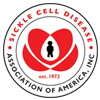Trusted Resources: Evidence & Education
Scientific literature and patient education texts
Biochemical surrogate markers of hemolysis do not correlate with directly measured erythrocyte survival in sickle cell anemia
source: American Journal of Hematology
year: 2016
authors: Quinn CT, Smith EP, Arbabi S, Khera PK, Lindsell CJ, Niss O, Joiner CH, Franco RS, Cohen RM
summary/abstract:Hemolysis is a key feature of sickle cell anemia (HbSS). Direct quantitation of hemolysis could be used as an objective outcome in clinical trials of new therapeutics for HbSS and would also enable better human studies of the pathogenesis of complications of HbSS that are ostensibly hemolysis-related, such as pulmonary hypertension. However, contemporary human studies in HbSS have used only surrogate markers of hemolysis rather than direct measurements of RBC survival. We directly quantified hemolysis in HbSS by measuring survival of an age cohort of RBCs labeled with a stable isotope, administered orally as 15 N-glycine, a metabolic precursor of heme. The atomic excess of 15 N in heme extracted from blood was monitored by mass spectrometry over time. We performed 13 labeling experiments in 11 individuals with HbSS. Mean RBC survival was 31.9 days (range 14.1-53.6). Both HbF level, a known determinant of hemolysis, and absolute reticulocyte count (ARC), an index of the marrow’s response to hemolysis, correlated with directly measured RBC survival (r = 0.61, P < 0.002; r = -0.84, P < 0.001). However, commonly used biochemical surrogates of hemolysis (LDH, AST, bilirubin, and plasma free hemoglobin) did not correlate with directly measured RBC survival. These biochemical surrogates should be interpreted cautiously, at best, in clinical trials and human physiologic studies in HbSS. ARC was the best correlate of total hemolysis, but only 70% of the variation in RBC survival was reflected in this marker. If greater accuracy is required in human studies, 15 N-glycine RBC labeling can directly and accurately quantify hemolysis.
organization: Cincinnati Children's Hospital Medical Center; University of Cincinnati College of Medicine; Emory University School of Medicine, Atlanta; Cincinnati Veterans Affairs Medical CenterDOI: 10.1002/ajh.24562
read more full text
Related Content
-
FDA Awards $2M to Phase 2 Trial of Vitamin D for Reducing Risk of SCD Respiratory ComplicationsThe U.S. Food and Drug Administration (F...
-
Low-molecular-weight heparins for managing vaso-occlusive crises in people with sickle cell diseaseBACKGROUND: Sickle cell disease is one ...
-
Researchers Develop Test for SCA to be Used in Low-Resource SettingsResearchers have developed an accurate, ...
-
What Are the Signs and Symptoms of Sickle Cell Disease?If a person has sickle cell disease (SCD...
-
Roland B. Scott Memorial Symposium: I Want Somebody to LoveRoland B. Scott Symposium on Sickle Cell...
-
Sickle Cell Patients are Innocent Victims of the Opioid Epidemic: Samir K. Ballas, MDhttps://www.youtube.com/watch?v=BOhY_gJo...
-
Phase 1 trial to test under-the-skin injection of sevuparin in sickle cell patientsModus Therapeutics is going to launch ...
To improve your experience on this site, we use cookies. This includes cookies essential for the basic functioning of our website, cookies for analytics purposes, and cookies enabling us to personalize site content. By clicking on 'Accept' or any content on this site, you agree that cookies can be placed. You may adjust your browser's cookie settings to suit your preferences. More Information
The cookie settings on this website are set to "allow cookies" to give you the best browsing experience possible. If you continue to use this website without changing your cookie settings or you click "Accept" below then you are consenting to this.




 +myBinder
+myBinder
